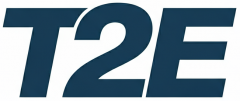We’ve talked about IT Strategy in prior posts, discussing its importance in establishing a coherent technological vision for any organization. The second step in our process is crucial: business alignment. Technology executives must ensure that their strategy aligns with the overarching direction of the business. IT exists not in isolation but as a vital support system that underpins business success by establishing effective and responsive systems that cater to its diverse needs.
2. Capture the Business Context: vision, mission, values, and strategic goals.
A key success factor for the technology strategy build process is mirroring and aligning with the business itself. In this step, it is essential to capture a comprehensive and clear understanding of the business environment. This can be achieved by thoroughly reviewing the business strategy, which should include the following critical elements:
- Vision of the Organization: This is the aspirational blueprint that outlines what the organization aims to achieve in the long term. Understanding this provides a direction for aligning IT initiatives.
- Mission and Purpose: This defines the core essence of what the organization does and why it exists. It helps in ensuring that IT initiatives remain focused on supporting the primary purpose of the business.
- Values that Govern the Activities of the Business: These are the principles and ethical guidelines that the business adheres to in its operations. Aligning with these values ensures that IT practices complement the business culture.
- Strategic Goals: These are objectives arranged in focus areas or themes that the business aims to achieve. They provide a roadmap for both immediate and future strategic IT planning.
- Strategic Initiatives: These are detailed programs and projects that are planned in priority order to achieve the organization’s vision, mission, and goals. Understanding these initiatives allows IT to prioritize its own projects to support business objectives effectively.
These components of the business’s plan will aid in the creation of a complementary IT counterpart that reflects the vision and mission of the organization. They will also provide invaluable insight into the impact of the business strategy on the IT organization through a careful analysis of strategic goals and initiatives.
If these elements of the business’s plan are missing, it’s a great opportunity for you to connect with key leaders to ensure business alignment.
Engage in discussions about your perspective on business and IT collaboration, offering insights into how IT can actively support and enhance business objectives. This dialogue not only strengthens relationships but also fosters an environment of mutual understanding and collaboration between IT and business leaders. As a result, IT can proactively align its strategy with the business and demonstrate its value as a strategic partner. With this alignment in place, technology executives can confidently move forward in creating an effective and comprehensive IT strategy that supports the overall goals of the organization. So, it’s crucial to constantly review and assess these elements to ensure that your IT strategy remains aligned with the ever-evolving goals of the business.
Lastly, remember that this alignment is an ongoing process.
Regular communication and collaboration between IT and business leaders are essential to maintaining a cohesive vision for the organization. By continuously capturing and incorporating changes in the business’s plan, technology executives can continuously adjust their strategy to support the business’s evolving needs and objectives. With this approach, IT can truly become a driving force in the success of the organization. So, strive for alignment with business leaders and continuously review and adjust your strategy to ensure that IT remains an invaluable contributor to the overall goals and vision of the organization. This not only positions IT as a strategic partner within the business but also helps drive innovation and growth for the entire organization.
In conclusion, capturing the business context is an essential step in creating an effective technology strategy. It allows technology executives to align their initiatives with the overarching direction of the business, ensuring that IT remains a valuable support system for achieving its goals. By understanding and incorporating elements such as vision, mission, values, strategic goals, and initiatives, IT can proactively collaborate with business leaders and continuously adjust its strategy to support the ever-evolving needs of the organization. This alignment is an ongoing process that requires strong communication and collaboration between IT and business leaders. By doing so, technology executives can truly demonstrate the value of IT as a strategic partner in driving success for the entire organization. So, make sure to capture the business context and keep it top of mind as you develop your technology strategy.
Click here for the third step in the strategy build process, develop the IT mandate.





